Nodding thistle
- Composite or aster (Asteraceae family):
- Carduus nutans L.
- EPPO code:
- CRUNU
- Other names:
- Musk thistle
Species information
- Lifecycle:
- Biennial.
- Propagation:
- Reproduces by wind-dispersed seed.
- Emergence:
- Seed germinates in the fall and in the spring.
- Habitat:
- Nodding thistle is found primarily in pastures and waste places, and along roadsides. It is rarely found in cultivated crops.
- Competitiveness:
- Nodding thistle reduces the productivity of pastures because it is largely unpalatable to many livestock.
Identification clues
Seedling
- Cotyledons:
- Oblong with no petiole and a prominent white vein.
- Young leaves:
- Its first leaves are bright green with lobed margins that have sharp spines that point in all directions.
- Mature leaves:
- Similar to its rosette (young) leaves, but smaller, the mature leaves are less lobed and alternately oriented on the stem.
Mature plant
- Stems:
- Hairy and with sharp spines.
- Flowers:
- Generally, nodding thistle flowers from June to October. Each plant has numerous bright purple flower heads that can range from 3–5 cm in diameter. Flowers will “nod” to one side.
- Seeds:
- The seed, which is light brown, shiny and 4 mm long with a knob at the end, is attached to a white feathery pappus, often referred to as “fluff”. The seed, which is light brown, shiny and 4 mm long has a knob at the tip; a long white feathery pappus, often referred to as “fluff”, is attached at the tip but falls easily.
- Roots:
- Thick, long and fleshy taproot.
Often mistaken for
I know it's not Bull thistle because the leaves of nodding thistle are lighter green in colour and the lobes are much closer together. The flower head of nodding thistle tends to droop down or “nods” to the ground, whereas bull thistle’s flower head is more upright.
I know it's not Canada thistle because the leaves of nodding thistle are more deeply lobed and have more spines. The flower head of nodding thistle is three to four times larger than that of Canada thistle. While nodding thistle’s flower head will eventually nod towards the ground, Canada thistle’s will stay upright.
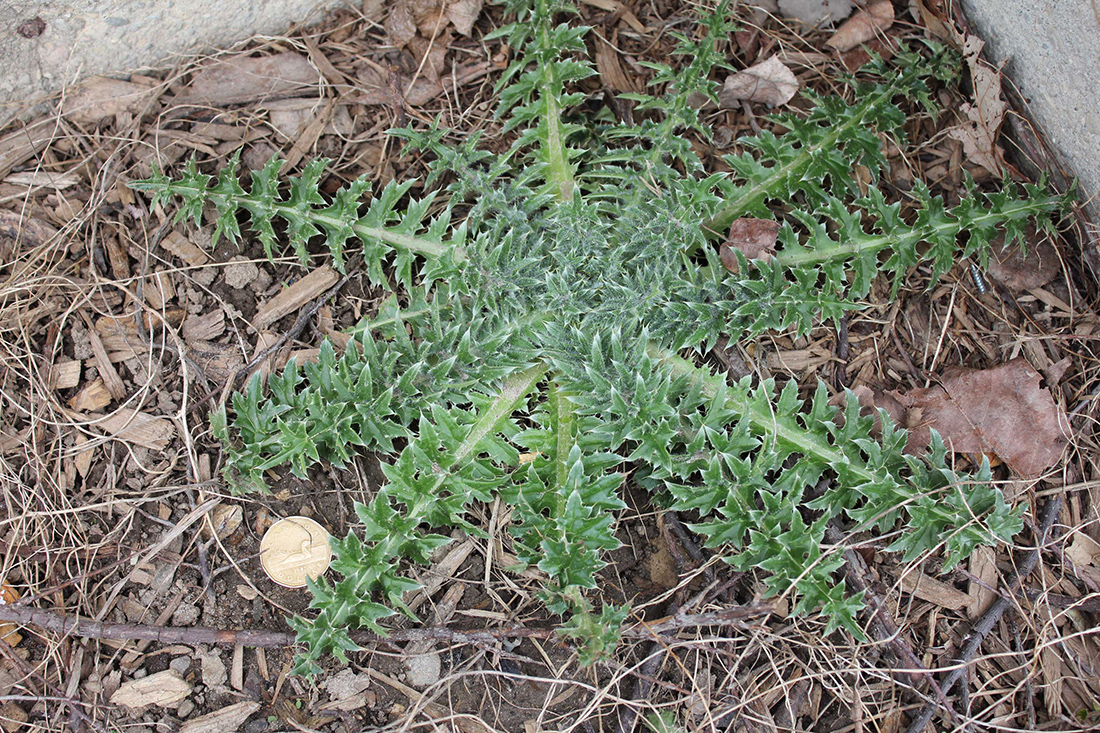
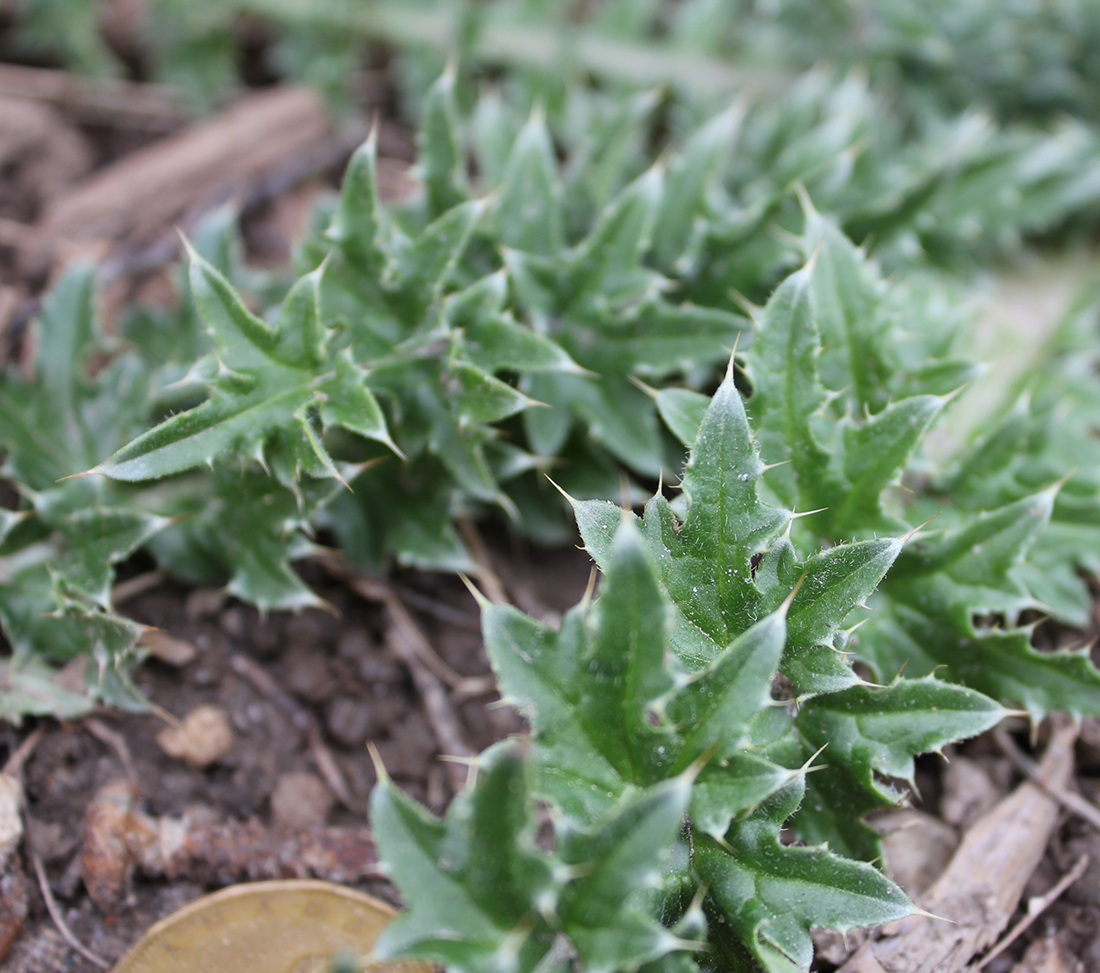
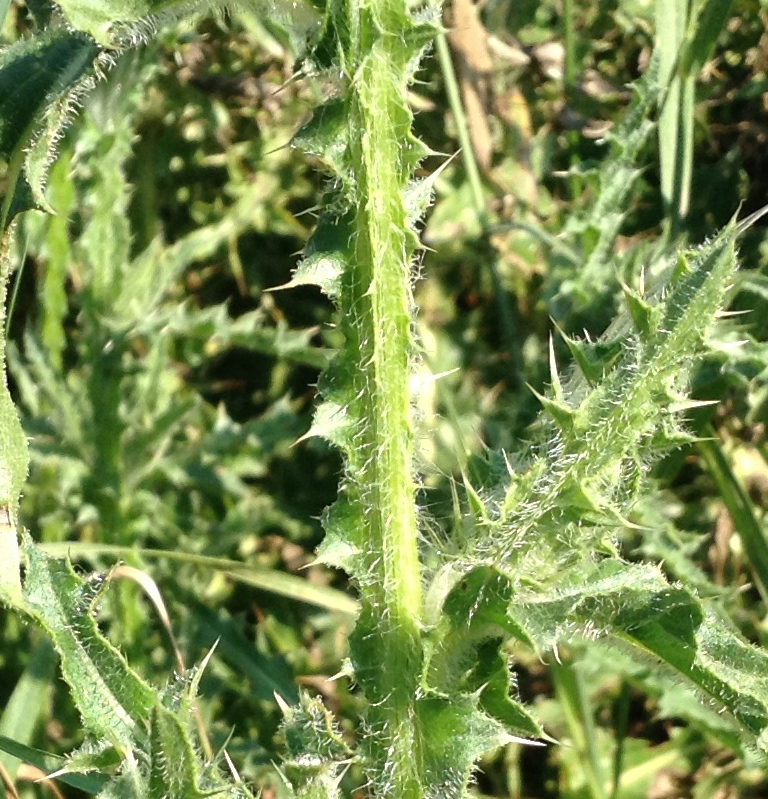
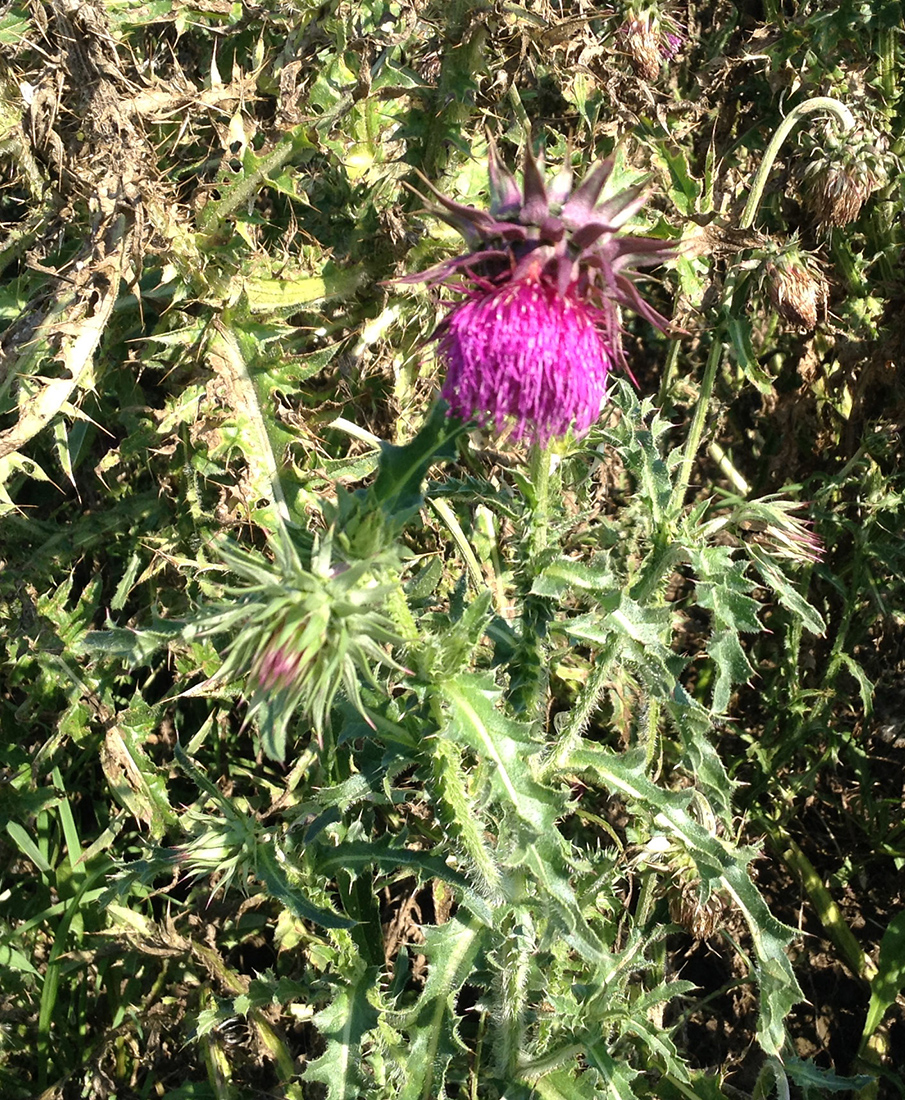
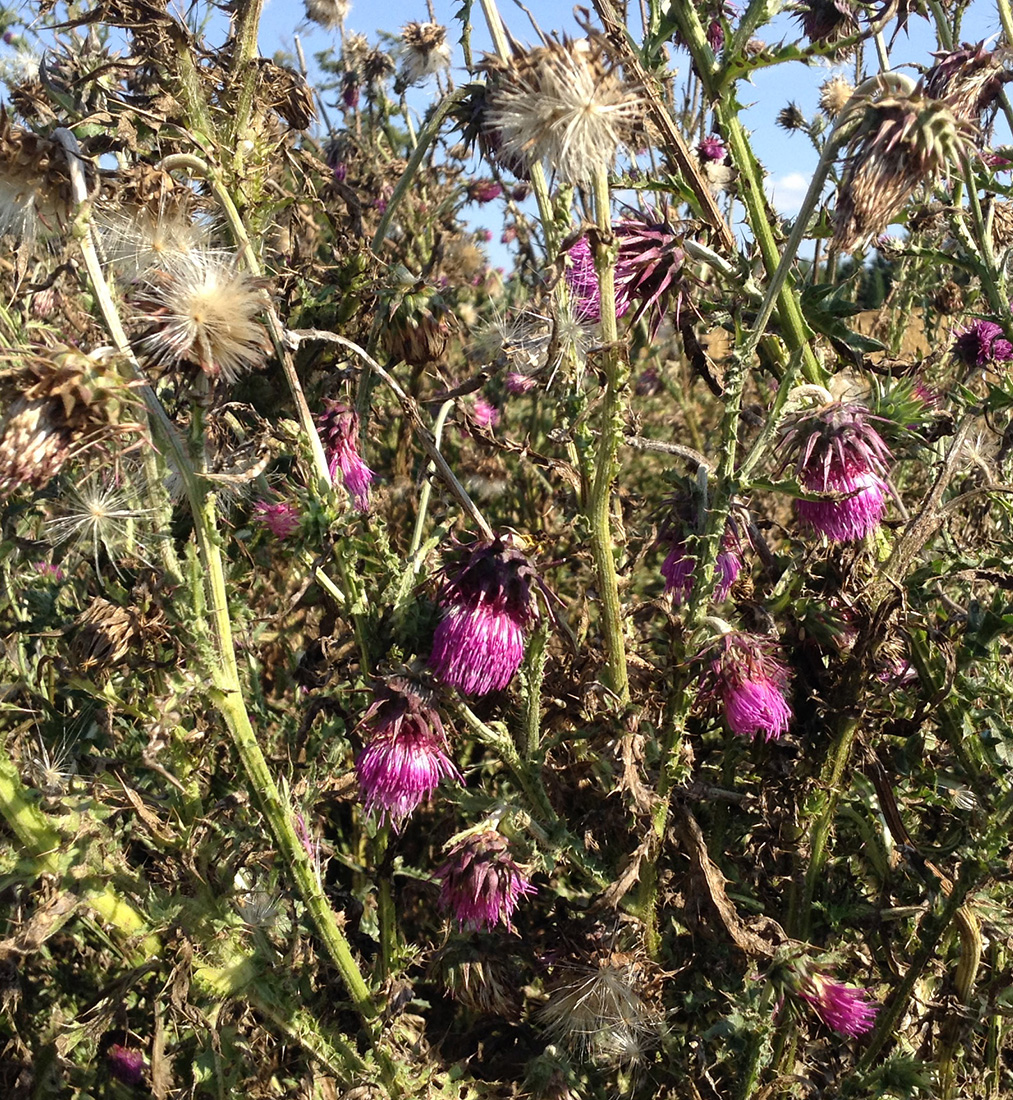
Updated: January 13, 2023
Published: January 13, 2023